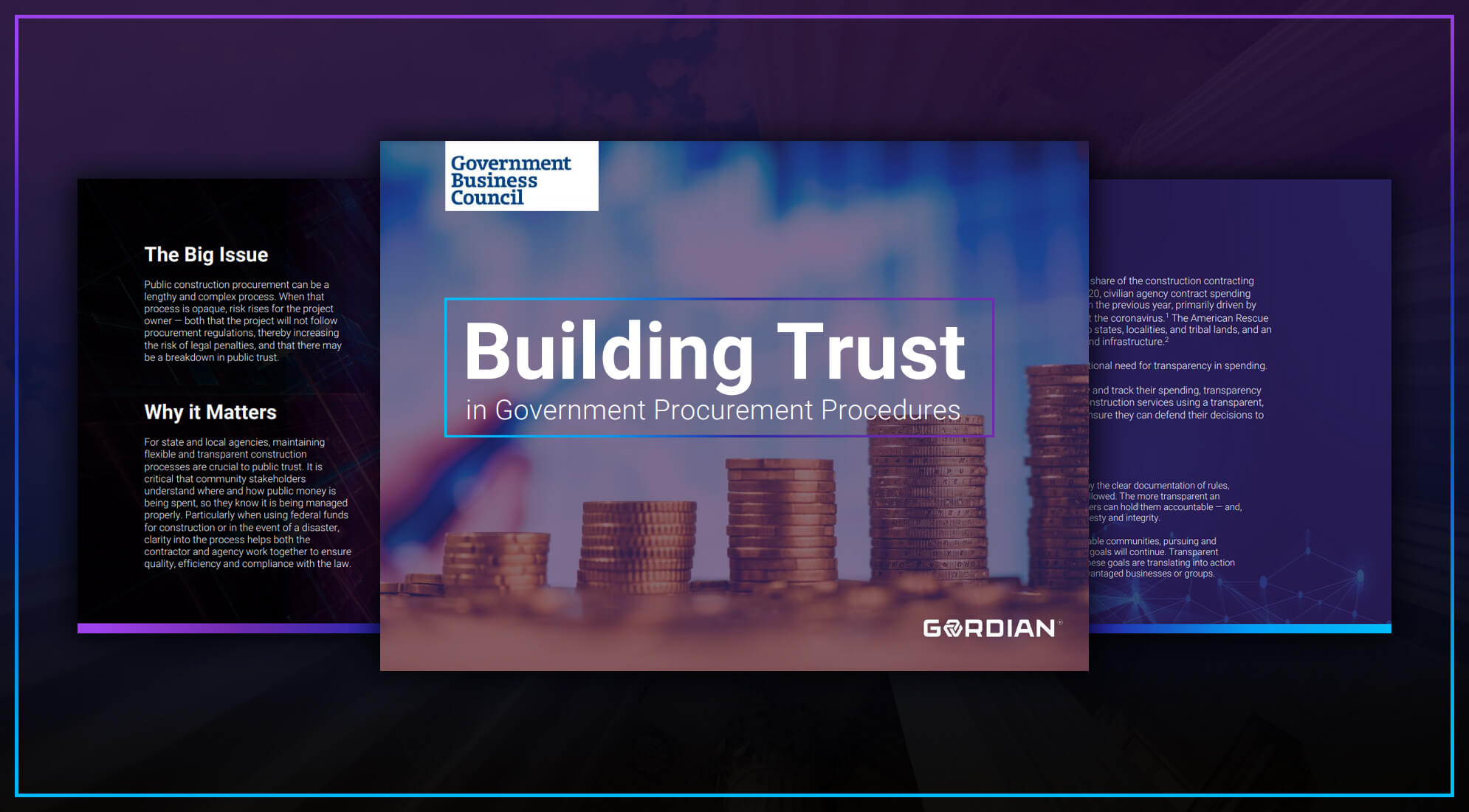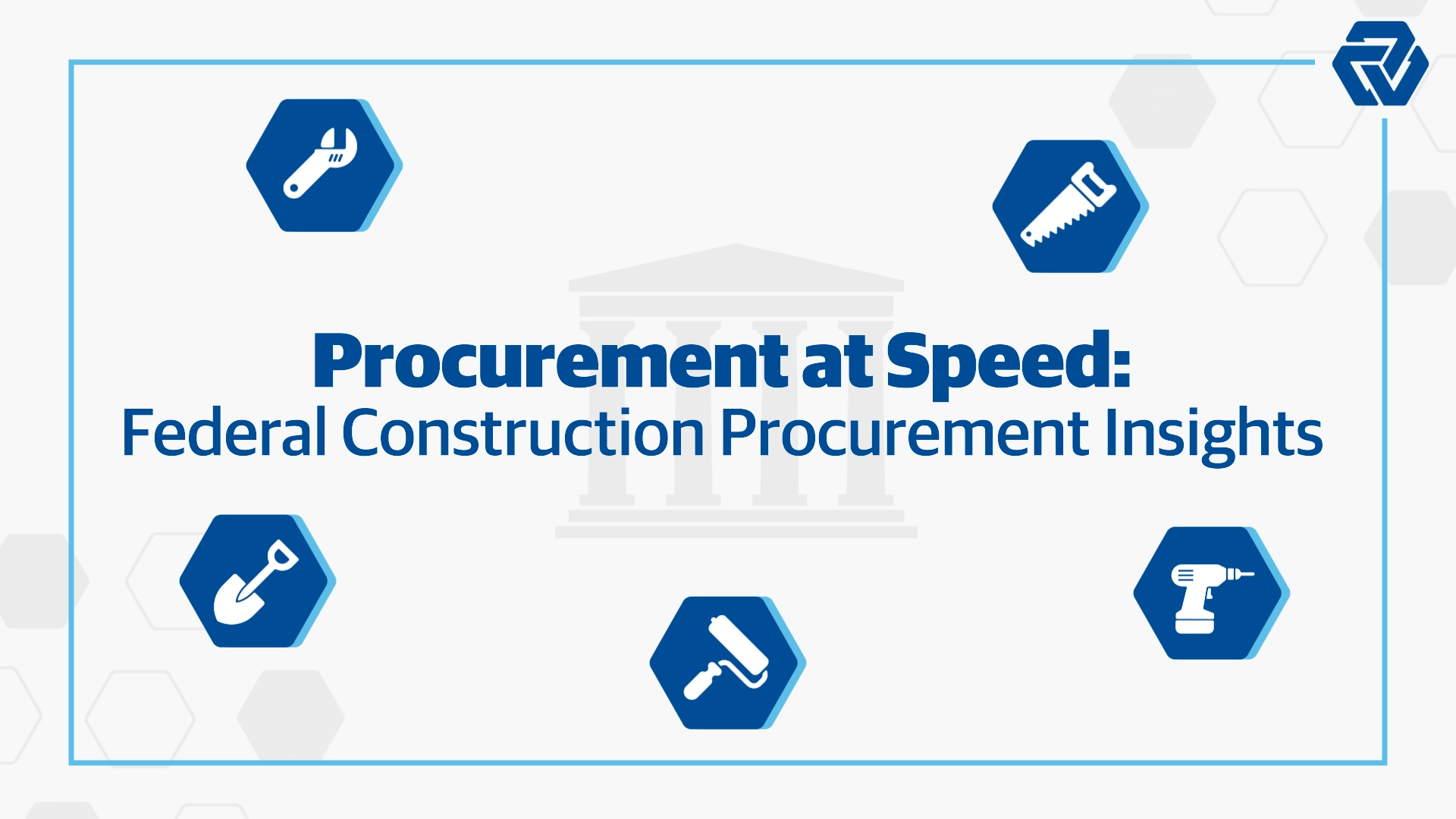Transparency in purchasing typically refers to the idea that money can be tracked along transactions to ensure that the prescribed dollar amount was sent to the appropriate vendor without any money disappearing along the way. When referring specifically to transparency in public construction procurement, though, there are two factors needed to prove a project is transparent. The first is that you must be able to recreate a complete record of purchase orders, in order to demonstrate that each dollar was put toward the project. The second is that each purchase must align with the scope of the project. Transparency is not merely accounting for each dollar spent. It’s the ability to prove that each dollar was spent in the manner it was intended to be spent, according to the agreed project scope.
Say that a school district needs to replace the entire hardwood flooring in one of their gyms. If the gym is 6,000 square feet, enough material should be purchased to cover that area, with perhaps a bit extra to account for any unforeseen circumstances. But if significantly more flooring is purchased than is necessary, the procurement of materials can no longer be considered transparent, as it exceeds the scope of work to be completed. Likewise, if a particular floor material was specified during the scope, but an alternate material was purchased, the purchase order could no longer be considered transparent without a proper, documented explanation.
Transparency is not merely accounting for each dollar spent. It’s the ability to prove that each dollar was spent in the manner it was intended to be spent, according to the agreed project scope.
Transparency isn’t limited to materials and equipment, though. An increasing number of local governments are setting goals for the inclusion of diverse vendors and contractors. When a project specifies that a percentage of the work must be completed by minority-owned businesses, women-owned businesses, veteran-owned businesses or other group, the only way to prove those goals are met is to keep a detailed record of spending.
Why Does Transparency Matter?
The most oft-cited reason for maintaining transparency in public construction projects is security during audits. While not every project will be audited, when an audit occurs, having a transparent record of purchase orders will both make the process easier and decrease the likelihood of spending coming under scrutiny. If the proper dollar amount can be traced from the source to the vendor, and proof can be provided that those amounts were spent on the appropriate items or services, then a public organization will have nothing to fear during an audit.
Learn more about how public agencies can plan and execute construction projects while building and protecting public trust in this free eBook, Contracting for Trust: Procurement Procedures in Government, produced in partnership with Government Business Council.
Auditability is not, however, the only reason for an organization to value transparency. Two important forms of capital are protected when records are kept transparent: funds and public trust. Having transparency in your purchase order history helps reduce the risk of owners being overcharged by contractors for select tasks or materials. It also reduces the risk of contractors being accused by owners of unfair business practices. Transparency benefits both groups, enabling them to work on a project without fear of the other jeopardizing their budget or reputation.
Two important forms of capital are protected when records are kept transparent: funds and public trust.
Damage to the reputations of government agencies, can spell disaster for public trust. The public can at times be quick to believe criticisms about government entities, whether those criticism are truthful or not, and slow to accept their explanations or apologies. Transparency helps bolster public trust by providing a historical record of transactions to quell accusations of improper use of public funds.
Improving Transparency in Public Construction Procurement
With transparency being of such high value, it’s no surprise to see government entities, both agencies and oversight committees, placing new emphasis on it. Agencies looking for ways to bolster their procurement transparency can turn to practices that have worked for other local governments. Additionally, agencies should recruit the help of industry partners with track records of success in coordinating contracts, documenting spending and aiding project success.
Here are five practical steps agencies can take to improve transparency in public construction:
- Use reliable data: Not all data is created equal. Agencies and partner design groups may have historical data on the costs of material, equipment and labor. But historical costs have a reliability limit, especially when markets face unexpected disruptions, as has been the case over the last year. Instead, look for an independent data source that can tailor costs to your local market, like Gordian’s Construction Task Catalog® . Local, up-to-date cost data will ensure that you have fair and accurate pricing for your project, reduce the likelihood of being overcharged for work and provide a strong foundation for tracking your spending.
- Follow a consistent and easily repeatable procurement process: Having a consistent process for each project will ensure that progress and spending can be tracked along each step. There should be standard documentation to accompany each step of the process. Even if an action is unnecessary for a particular project, it should be documented as such, rather than skipped. Any deviation from the process will serve as a red flag, making it easier to thwart potential illicit activities.
- Track spending in a secure software: Spreadsheets and written documents have their place. But when it comes to standardizing your procurement process and keeping your records secure, industry software products outpace them by an extraordinary amount. Ideally, the software you choose will be cloud-based with shared licensing, so multiple members of your agency can enter, track and verify purchase orders and expenditures throughout the project. It also should be able to store documents, like the scope of work, so they can easily be pulled up to check against the purchase record.
- Partner with a reputable third party: Partnering with a third party that has a history of contributing to project success can greatly increase the accuracy and transparency of your construction project. Their expertise will allow them to catch errors before any documents are finalized to reduce the chances of the funding being dispersed inappropriately. In addition, their presence in the room or software will add a layer of validity to your agency should an audit occur.
- Conduct outreach to target groups: As diversity, equity and inclusion (DE&I) goals continue to grow in public procurement, agencies can take a proactive role in contacting and recruiting contractor and subcontractor groups who would benefit from D&I efforts. Obviously, this should be done in an open and documented manner to avoid accusations of unfair business practices. But ensuring projects are adequately advertised to such businesses and conducting outreach to target contracting groups greatly increases an agency’s chance of meeting its goals.
The Right Partner for Transparency in Public Construction Procurement
Gordian has over 30 years of proven success in coordinating public construction procurement alongside state, local and federal agencies. Our industry-leading Job Order Contracting solution helps agencies efficiently procure contracting help for repair, replacement, maintenance and construction projects. Plus, each project is tracked in a secure, cloud-based software, so agencies can ensure their projects attain the highest level of transparency in public construction.






